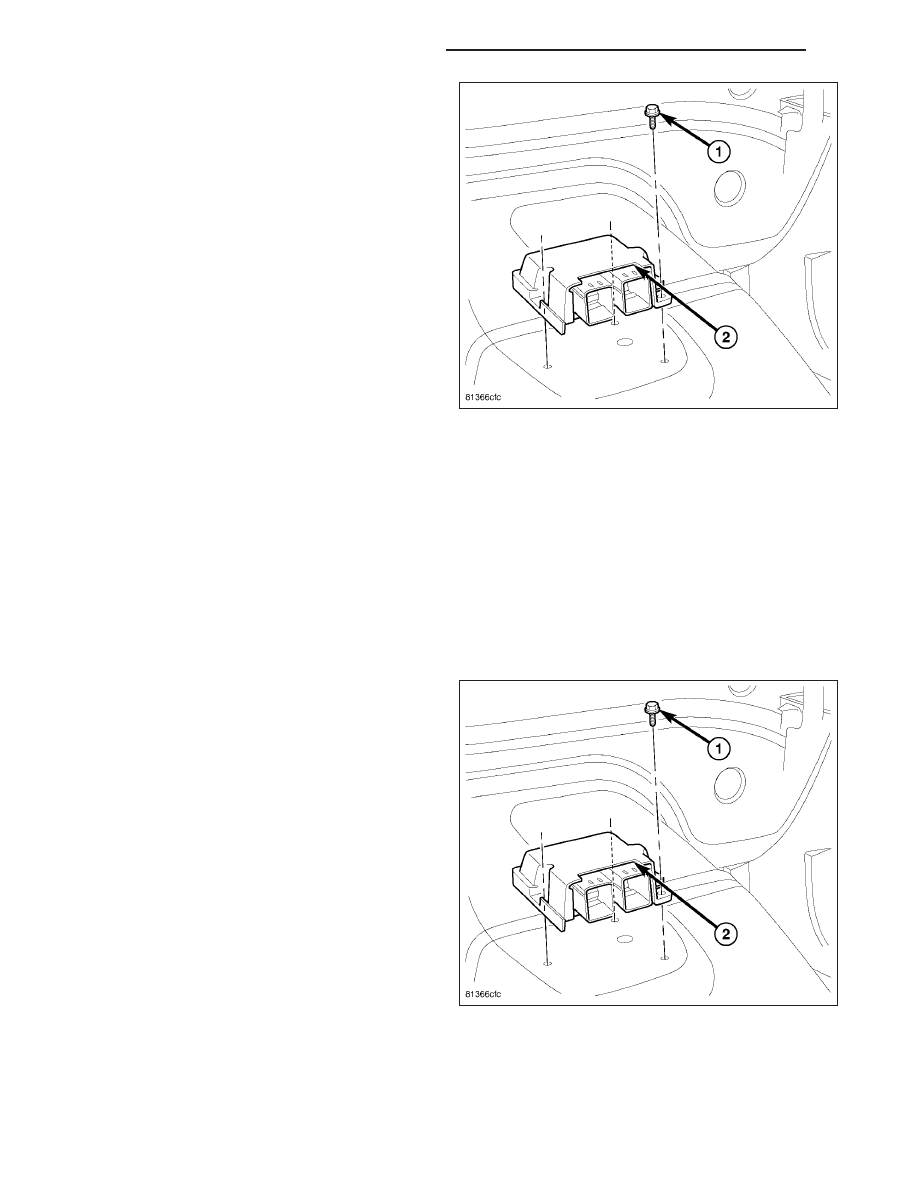Chrysler 300/300 Touring/300C, Dodge Magnum. Manual - part 749

5. Remove the three mounting screws (1) to the ORC
(2).
INSTALLATION
WARNING: Do not install ORC if mounting location is deformed or damaged. This will cause the ORC to be
improperly located and could result in occupant personal injury or death.
WARNING: Never replace both the Occupant Restraint Controller (ORC) and the Occupant Classification
Module (OCM) at the same time. If both require replacement, replace one, then perform the Airbag System
test (Refer to 8 - ELECTRICAL/RESTRAINTS - DIAGNOSIS AND TESTING - AIRBAG SYSTEM) before replac-
ing the other. Both the ORC and the OCM store Occupant Classification System (OCS) calibration data,
which they transfer to one another when one of them is replaced. If both are replaced at the same time, an
irreversible fault will be set in both modules and the OCS may malfunction and result in personal injury or
death.
1. Position the ORC (2) into position and install the
three mounting screws (1). Tighten the screws to
11 N·m (97 in. lbs.).
8O - 402
RESTRAINTS - SERVICE INFORMATION
LX